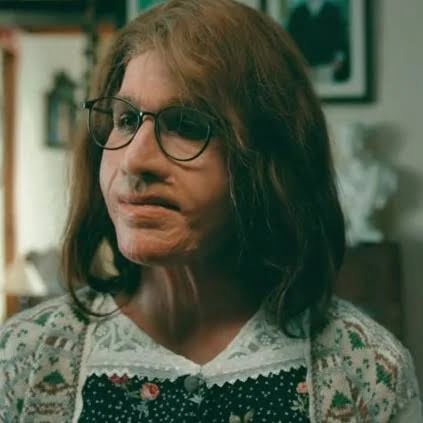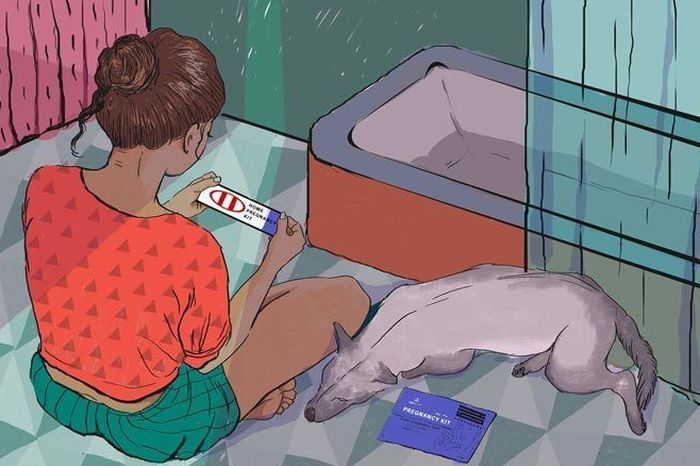With the recent unfortunate demise of actor Sushant Singh Rajput, the importance of mental health was brought to centre-focus again. Especially in these circumstances, one question that we also ought to ask ourselves is this: Are we doing enough to educate ourselves as well as others about mental health? And unfortunately, the answer is no. The media and popular culture also has a big role to play in this.
Popular culture has the power and means to spread awareness among the masses. However, when commercially and critically lauded movies like Ratsasan (2018) and Bulbbul (2020) make a slip-up by woefully misrepresenting marginalised individuals, to the point that these characters are demonised in the narrative, it is important to note that such portrayals will only strengthen the existing stereotypes concerning mental health.
Also read: “Am I Enough?” I Am Enough! — Body Imagery And Disability
When commercially and critically lauded movies like Ratsasan (2018) and Bulbbul (2020) make a slip-up by woefully misrepresenting marginalised individuals, to the point that these characters are demonised in the narrative, it is important to note that such portrayals will only strengthen the existing stereotypes concerning mental health.
In Ratsasan, which translates to ‘demon,’ an individual named Christopher who is suffering from Progeria is portrayed as the main antagonist. The Progeria Handbook from The Progeria Research Foundation explicates: “Progeria is a rare, fatal, ‘premature aging’ syndrome.” Put simply, individuals suffering from Progeria display signs of accelerated growth and despite these changes in young bodies, research has proven that these young individuals possess remarkable intellect. When movies like Paa (2009) have made huge advancements in trying to make people aware about this rare genetic condition, Ratsasan has used Progeria as a crutch to employ a narrative of a psychological-thriller, and in doing so, the movie has inadvertently demonised an individual suffering from Progeria. Moreover, the almost 3-hour long movie rushes through the story of Christopher who was constantly bullied throughout his childhood because of his genetic condition which affected his appearance, and it has glossed over the psychological toll these experiences took on his young mind. Furthermore, Ratsasan explains how these negative experiences turned Christopher into a ‘psycho-killer,’ even though research shows that patients suffering from Progeria show no violent behaviour.
Ratsasan has used Progeria as a crutch to employ a narrative of a psychological-thriller, and in doing so, the movie has inadvertently demonised an individual suffering from Progeria.

In an attempt to spin a tale concerning revenge psychology, the filmmakers have disregarded the struggles that the character went through and the negative impact these experiences had on his young impressionable mind as well as on his mental health. In Ratsasan, the significance of talking about the harmful consequences of bullying gets replaced with a more sensationalised topic, that is, the pursuit of unveiling a crazy ‘psycho-killer’ who targets young girls.
In another movie, that is, Bulbbul, the filmmakers have explored the story of a young girl named Bulbbul, who was sexually assaulted and brutalised, after which she blossomed into a fierce and formidable woman. Although this film has done a commendable job with its feminist revisionist take on tackling the issues of patriarchy, unfortunately, it also borders on the edge of being a rape-revenge drama that has used a mentally under-developed character—Mahendra—as a crutch to develop the plot. Bulbbul provides no character arc to Mahendra’s storyline and uses him only to brutalise Bulbbul, after which we witness Bulbbul’s transformation. Once again, such a narrative pushes the importance of educating people about mental health and mental health-related illnesses to the background, and it ends up demonising a mentally under-developed individual to satisfy the usual stereotypical tropes of the rape-revenge genre.
As it happened in the case of Kabir Singh—a movie which glorified misogyny and toxic masculinity, wherein people argued that a movie should only be seen as a form of entertainment, one can argue that movies like Ratsasan and Bulbbul should be taken for their entertainment value. However, given the impact that popular culture exerts on the minds of its audience, it is safe to say that a movie functions more than just as a form of entertainment. Instead of taking the opportunity to educate the audience concerning mental health, Ratsasan and Bulbbul push the already marginalised individuals further away. The extent of harm such narratives do becomes explicitly clear when one browses through the many explanation videos available on YouTube concerning these movies where creators have used words like ‘pagal’—meaning mad or insane—for characters like Christopher and Mahendra, who, as portrayed in the films, persistently annoy (‘tang karna’) young girls like Bulbbul. Now, such videos reveal how the lack of awareness regarding mental health perpetuates the cycle of misrepresentation that leads to the ostracisation of individuals struggling with mental health problems. These videos, like the movies themselves, further the misconception that individuals dealing with psychological issues are freaks who can do more harm than good to the society at large.
Also read: Zero Fails To Zero In On Any Real Issue Related To Disability
One can argue that movies like Ratsasan and Bulbbul should be taken for their entertainment value. Given the impact that popular culture exerts on the minds of its audience, it is safe to say that a movie functions more than just as a form of entertainment.
It is important to note here that both of these movies—Ratsasan and Bulbbul end with the extermination of the evil, which in this case, refers to Christopher and Mahendra, and as a result, the movies provide no room for corrective treatment or therapy for the mentally unstable or the psychologically distressed. This stigmatises patients suffering from psychological disorders even more.
As it has been argued by mental health advocates time and again, words do matter when it comes to mental health, and the persistent use of language to perpetuate such gross misrepresentations of people with mental disabilities in mainstream popular culture can cause harm to patients dealing with mental health issues in real life. It is high time that filmmakers and other content creators become aware of the issues at play here, so that a nuanced discussion concerning mental health can take place and a safe space can be created at large for the psychologically distressed.





I agree to your views here. But I have seen how the stereotyping influences a low IQ kids, specially male child. Do you think that portraying the character of Mahendra gives a clear statement that misogyny and patriarchy are imbibed in kids and the statement that ‘they are not so intelligent to understand all these concepts’ is proven false? Would really like you to comment on this.